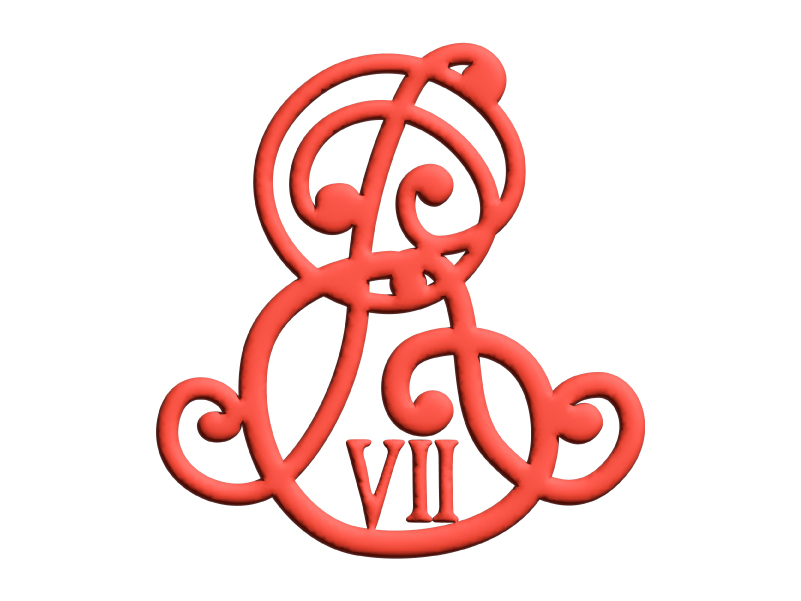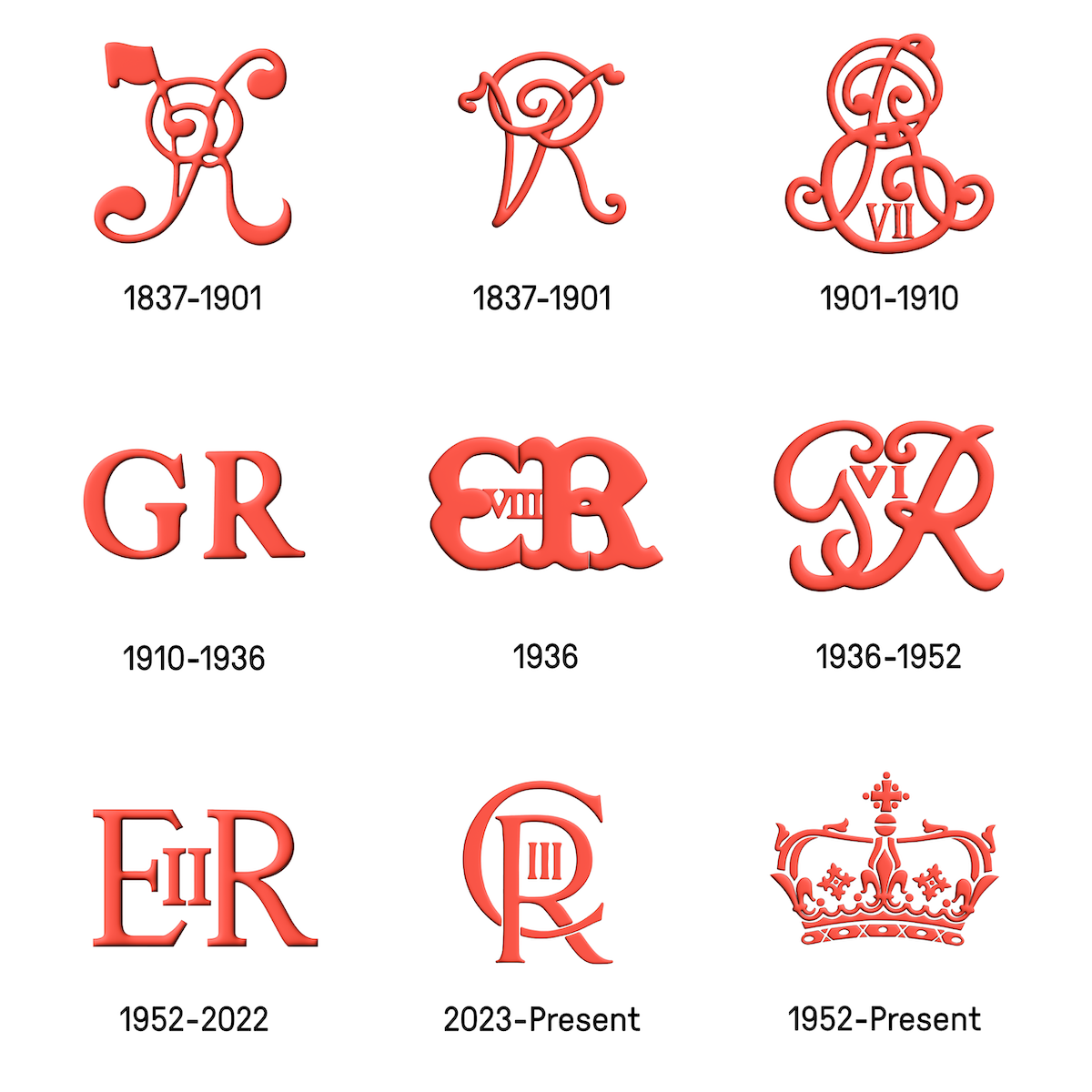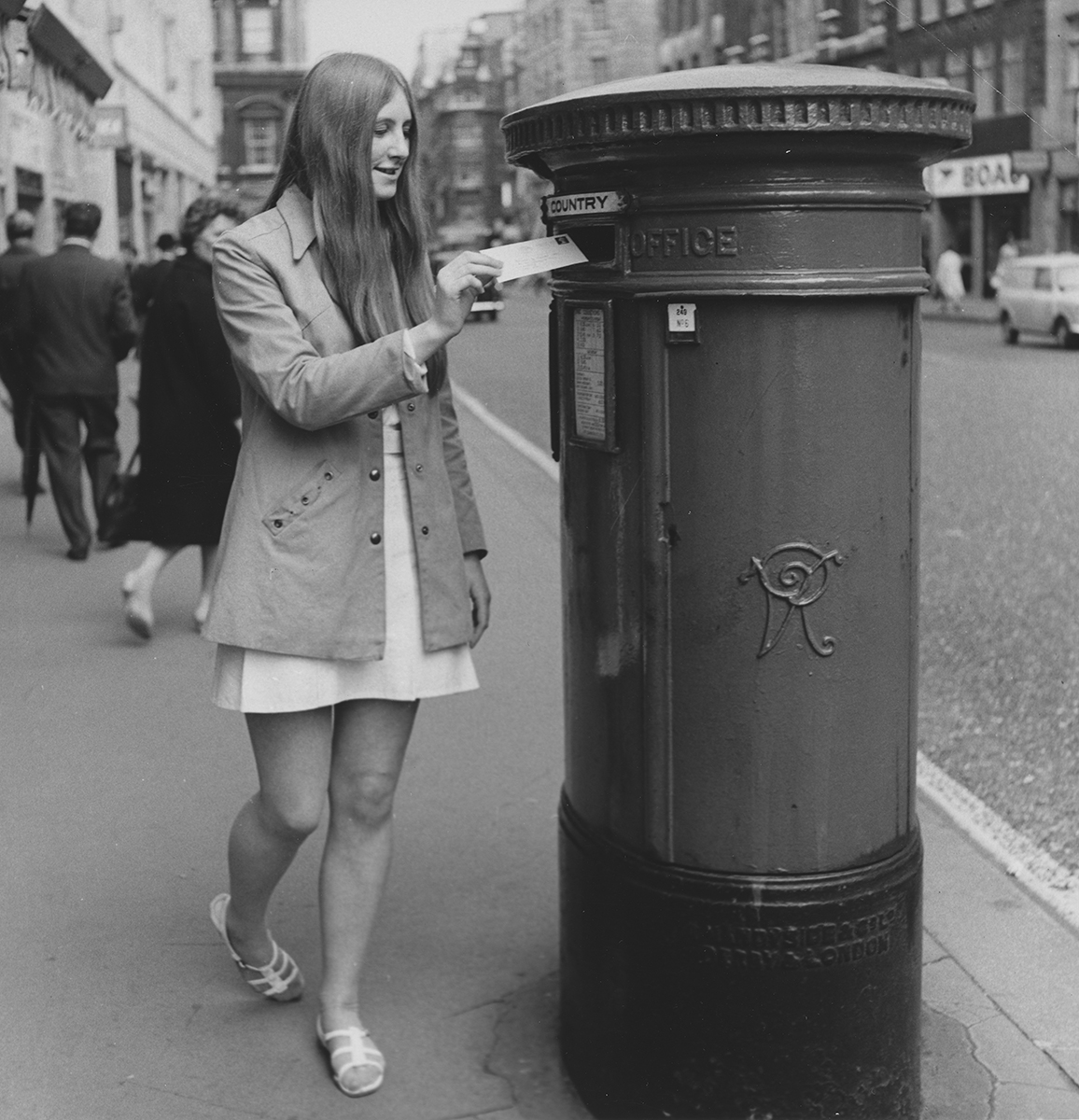Unlocking The World Of Royal Cyphers: A Comprehensive Guide
Royal cyphers have been an integral part of history, symbolizing power, authority, and legacy. These unique monograms have adorned coins, buildings, and official documents throughout centuries, leaving an indelible mark on the world's cultural heritage. Whether you're a history enthusiast or simply curious about these fascinating symbols, this article delves deep into the origins, significance, and evolution of royal cyphers.
From the majestic halls of Buckingham Palace to the ancient ruins of empires long past, royal cyphers continue to captivate audiences worldwide. They are more than mere designs; they represent the identity and authority of monarchs, bridging the gap between the past and the present. In this article, we explore the intricate details surrounding these iconic symbols, uncovering their meanings and importance in modern times.
As we journey through this exploration, you will discover how royal cyphers have influenced art, architecture, and even contemporary design. By understanding their historical context and cultural significance, we gain a deeper appreciation for the rich traditions they embody. Let's embark on this fascinating adventure together!
Read also:Lisa Rinna 2024 A Comprehensive Guide To Her Life Career And Achievements
Table of Contents:
- The History of Royal Cyphers
- Design Elements of Royal Cyphers
- Symbolism and Meaning
- Royal Cyphers of Notable Monarchs
- How Royal Cyphers Are Used Today
- Royal Cyphers in Art and Architecture
- Preserving Royal Cyphers
- Contemporary Applications of Royal Cyphers
- Global Influence of Royal Cyphers
- The Future of Royal Cyphers
The History of Royal Cyphers
Royal cyphers have a rich and storied history that dates back centuries. The earliest examples can be traced to ancient civilizations, where rulers used personalized symbols to mark their authority. Over time, these symbols evolved into the intricate designs we recognize today. The practice of creating royal cyphers gained prominence during the medieval period, as monarchs sought to establish their legitimacy and sovereignty.
In Europe, royal cyphers became a hallmark of royal power, often appearing on coins, seals, and official documents. Each monarch's cypher was unique, reflecting their personal preferences and the traditions of their reign. For instance, the Tudor dynasty in England introduced elaborate designs that combined heraldic elements with personal monograms.
Evolution Through the Ages
As societies advanced, so did the complexity of royal cyphers. The Renaissance period saw a surge in artistic expression, leading to more ornate and detailed designs. By the 18th and 19th centuries, royal cyphers had become standardized, with specific rules governing their creation and use. This standardization helped ensure consistency across different mediums, reinforcing their role as symbols of authority.
- Medieval Period: Simple yet distinctive designs
- Renaissance: Increased artistic complexity
- Modern Era: Standardized and formalized designs
Design Elements of Royal Cyphers
The design of a royal cypher is a delicate balance of artistry and symbolism. Typically, it consists of the monarch's initials, often intertwined with crowns, scepters, or other heraldic elements. These elements convey the monarch's status and the traditions of their reign. The choice of font, color, and layout also plays a crucial role in creating a distinctive and memorable design.
For example, Queen Elizabeth II's cypher features her initials "EIIR" (Elizabeth II Regina) surrounded by a crown, symbolizing her role as sovereign. Similarly, King Charles III's cypher incorporates elements from his family's heraldry, creating a unique yet traditional design.
Read also:Ashton Irwin And Gemma Styles A Deep Dive Into Their Relationship And Personal Lives
Key Components of a Royal Cypher
- Initials: Representing the monarch's name
- Crown: Symbolizing sovereignty
- Heraldic Elements: Reflecting family traditions
Symbolism and Meaning
Royal cyphers are more than decorative designs; they carry deep symbolic meanings that reflect the values and aspirations of the monarchs they represent. Each element within a cypher tells a story, whether it's the choice of colors, the inclusion of specific symbols, or the arrangement of the design. Understanding these symbols provides insight into the historical and cultural context of the time.
For instance, the use of gold and blue in many royal cyphers symbolizes wealth and loyalty, while the presence of a crown signifies authority and divine right. These symbols resonate with audiences across generations, maintaining their relevance and importance in modern society.
Common Symbols in Royal Cyphers
- Crown: Authority and sovereignty
- Scepter: Power and justice
- Shield: Protection and defense
Royal Cyphers of Notable Monarchs
Throughout history, several monarchs have left an indelible mark with their distinctive royal cyphers. These designs not only reflect the personal tastes of the monarchs but also the cultural and political climate of their reigns. Let's explore some of the most iconic royal cyphers and the monarchs behind them.
Table of Notable Monarchs and Their Cyphers
| Monarch | Cypher | Significance |
|---|---|---|
| Queen Victoria | VR | Symbolized the Victorian era's industrial and cultural achievements |
| King George VI | GR VI | Represented resilience during World War II |
| Queen Elizabeth II | EIIR | Embodied the longest reign in British history |
How Royal Cyphers Are Used Today
In modern times, royal cyphers continue to play a vital role in official capacities. They appear on government buildings, postal stamps, and military insignia, serving as a reminder of the monarchy's enduring influence. Beyond their official uses, royal cyphers have also found their way into popular culture, appearing in fashion, jewelry, and even digital media.
For example, the cypher of Queen Elizabeth II is prominently featured on British currency, while King Charles III's cypher has been adopted for use on royal correspondence and official documents. These applications ensure that royal cyphers remain relevant and visible in today's world.
Royal Cyphers in Art and Architecture
Royal cyphers have inspired countless works of art and architecture throughout history. From the intricate carvings on palace facades to the delicate brushstrokes in illuminated manuscripts, these symbols have left an indelible mark on the artistic landscape. Artists and architects continue to draw inspiration from royal cyphers, incorporating their elements into modern designs.
For instance, the Palace of Westminster features numerous royal cyphers in its architecture, serving as a testament to the monarchy's historical significance. Similarly, contemporary artists have reimagined traditional cyphers in innovative ways, blending historical elements with modern aesthetics.
Preserving Royal Cyphers
Preserving royal cyphers is essential to maintaining the cultural heritage they represent. Efforts to document and protect these symbols ensure that future generations can appreciate their beauty and significance. Museums, archives, and digital repositories play a crucial role in this preservation, providing access to a wealth of information about royal cyphers.
Advancements in technology have also facilitated the preservation process, allowing for detailed scans and reproductions of original designs. These digital records not only aid in conservation but also enable broader access to these cultural treasures.
Contemporary Applications of Royal Cyphers
In today's digital age, royal cyphers have found new applications in branding and marketing. Companies and organizations often incorporate these symbols into their logos and marketing materials, leveraging their historical significance to enhance their brand image. For example, luxury brands frequently use royal cyphers to convey exclusivity and prestige.
Moreover, social media platforms have provided a new avenue for sharing and appreciating royal cyphers. Users can explore high-resolution images, learn about their history, and even create their own designs inspired by these iconic symbols.
Global Influence of Royal Cyphers
While royal cyphers are most commonly associated with European monarchies, their influence extends far beyond the continent. Many countries around the world have adopted similar symbols to represent their leaders and cultural heritage. These adaptations reflect the universal appeal of royal cyphers and their ability to transcend cultural boundaries.
For example, Japan's imperial seal and India's Ashoka Chakra both draw inspiration from traditional royal symbols, adapting them to suit their unique cultural contexts. This global influence highlights the enduring legacy of royal cyphers and their role in shaping modern symbolism.
The Future of Royal Cyphers
As we look to the future, royal cyphers will undoubtedly continue to evolve, adapting to new technologies and cultural trends. Their significance as symbols of authority and tradition ensures their relevance in an ever-changing world. Whether used in official capacities or as inspiration for contemporary design, royal cyphers will remain a vital part of our cultural heritage.
By embracing innovation while honoring tradition, royal cyphers will continue to inspire and captivate audiences worldwide. Their ability to bridge the past and the present makes them a timeless symbol of power and legacy.
Conclusion
Royal cyphers are more than mere designs; they are powerful symbols that encapsulate the history, culture, and traditions of the monarchies they represent. Through this comprehensive exploration, we have uncovered their origins, significance, and enduring influence on modern society. Whether used in official capacities or as inspiration for contemporary art, royal cyphers continue to captivate and inspire.
We invite you to share your thoughts and insights in the comments below. Do you have a favorite royal cypher? How do you think these symbols will evolve in the future? Your feedback and engagement help us create content that resonates with our audience. Thank you for joining us on this fascinating journey through the world of royal cyphers!


